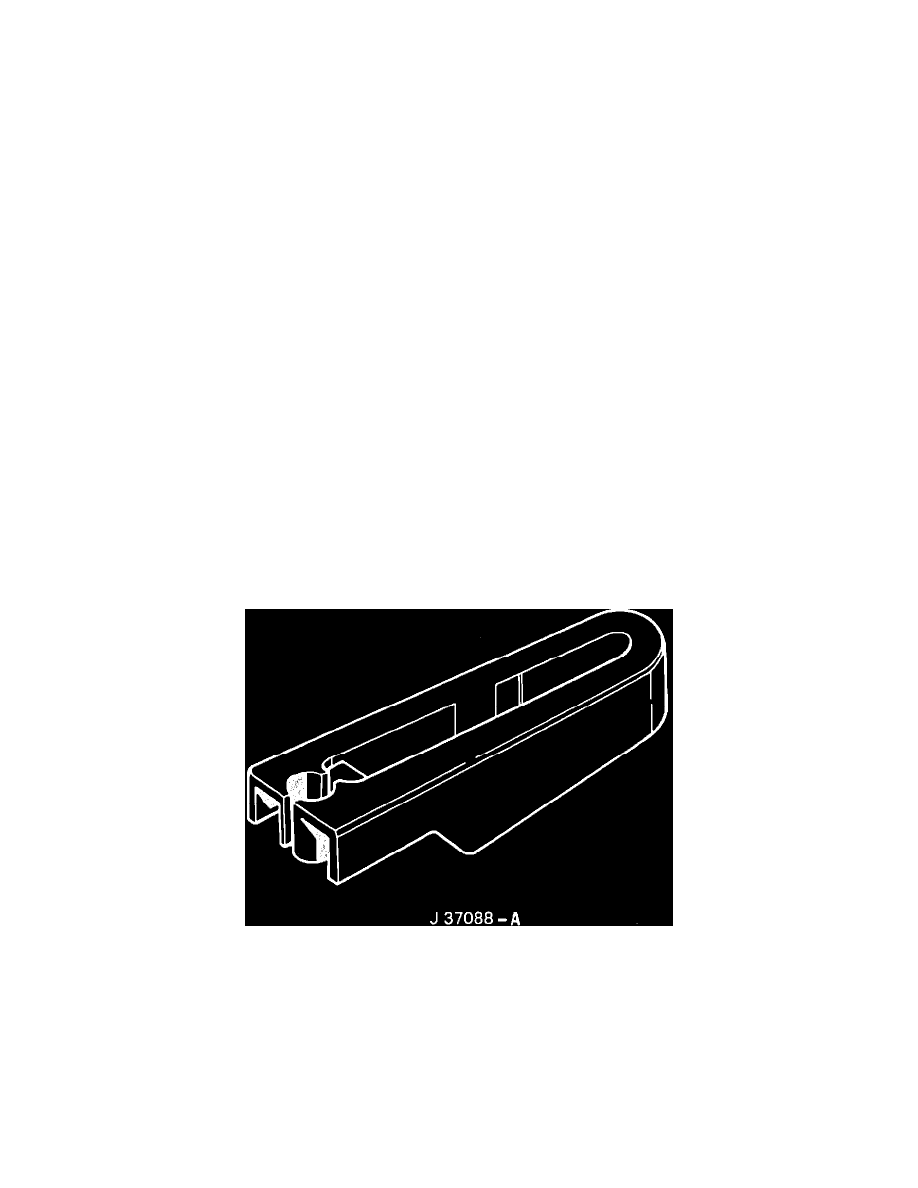Allante V8-273 4.5L (1991)

NOTE: DO NOT use copper or aluminum tubing to replace steel tubing. Only tubing meeting the 124M specification or its equivalent is capable of
meeting all pressure and vibration characteristics necessary to ensure the durability standard required.
Many of the feed and return pipes use screw couplings with O-rings. Any time these fittings are loosened to service or to replace components, ensure
that:
^
A back-up wrench is used to loosen and tighten fittings.
^
Check all O-rings at these locations (if applicable) for cuts or any damage and replace as necessary.
^
Use correct torque when tightening these fittings.
^
Inspect all pipes for kinks, leaks or dents.
^
Pipes must be properly secured to the frame to prevent chaffing. A minimum of 6 mm (1/4 inch) clearance must be maintained around a pipe to
prevent contact or chaffing.
^
Fuel feed and return pipes are secured to the underbody with clamps and screw assemblies.
^
Follow the same routing as the original pipe.
^
Fuel pipes must not contact the fuel tank or underbody at any point.
FUEL AND VAPOR PIPE REPAIR:
When it is impractical to replace an entire fuel line to repair localized damage, use the following procedure:
^
When rubber hose is used to replace pipe, use only reinforced fuel-resistant hose which is identified with the word "Fluoroelastomer" on the hose.
The inside diameter of the hose must match the outside pipe diameter.
^
DO NOT use rubber hose within 100 mm (4 inches) of any part of the exhaust system, or within 254 mm (10 inches) of the catalytic converter.
^
In repairable areas, cut a piece of hose 100 mm (4 inches) longer than the portion of line removed. If more than a 6 inch length of pipe is removed,
use a combination of steel pipe and hose so that hose lengths will not be more than 254 mm (10 inches).
^
Follow the same routing as the original pipe.
^
Cut the ends of the pipe, remaining on the car, square with a tubing cutter. Using the first step of a double flaring tool, form a bead on the end of
each pipe section. If the pipe is too corroded to withstand the beading operation without damage, the pipe should be replaced. If a new section of
pipe is used, form a bead on both ends of it also.
^
Use a screw type hose clamp NO. #2494772, or equivalent. Slide the clamps onto the pipe and push hoses 51 mm (2 inches) onto each portion of
the fuel pipe. Tighten the clamps on each side of the repair.
^
Pipes must be properly secured to the frame to prevent chaffing.
NYLON FUEL LINES
Nylon Fuel Line Tool
WARNING:
^
To reduce the risk of fire and personal injury always follow the proper procedure for disconnecting and connecting fuel pipe quick
connect fittings. This will ensure good connections and prevent possible leaks.
^
Safety glasses must be worn when using compressed air, as flying dirt particles may cause eye injury.
^
DO NOT attempt to repair flexible nylon fuel pipes due to possible safety hazard. Replace only with the same type of flexible fuel pipes
and fittings as those removed.
Nylon fuel lines are designed to perform the same function as the steel or rubber fuel lines they are replacing. Nylon lines are made to withstand
maximum fuel line pressure, exposure to fuel additives, and changes in weather. There are two sizes used: 3/8" ID for the fuel feed and 5/16" ID for the
